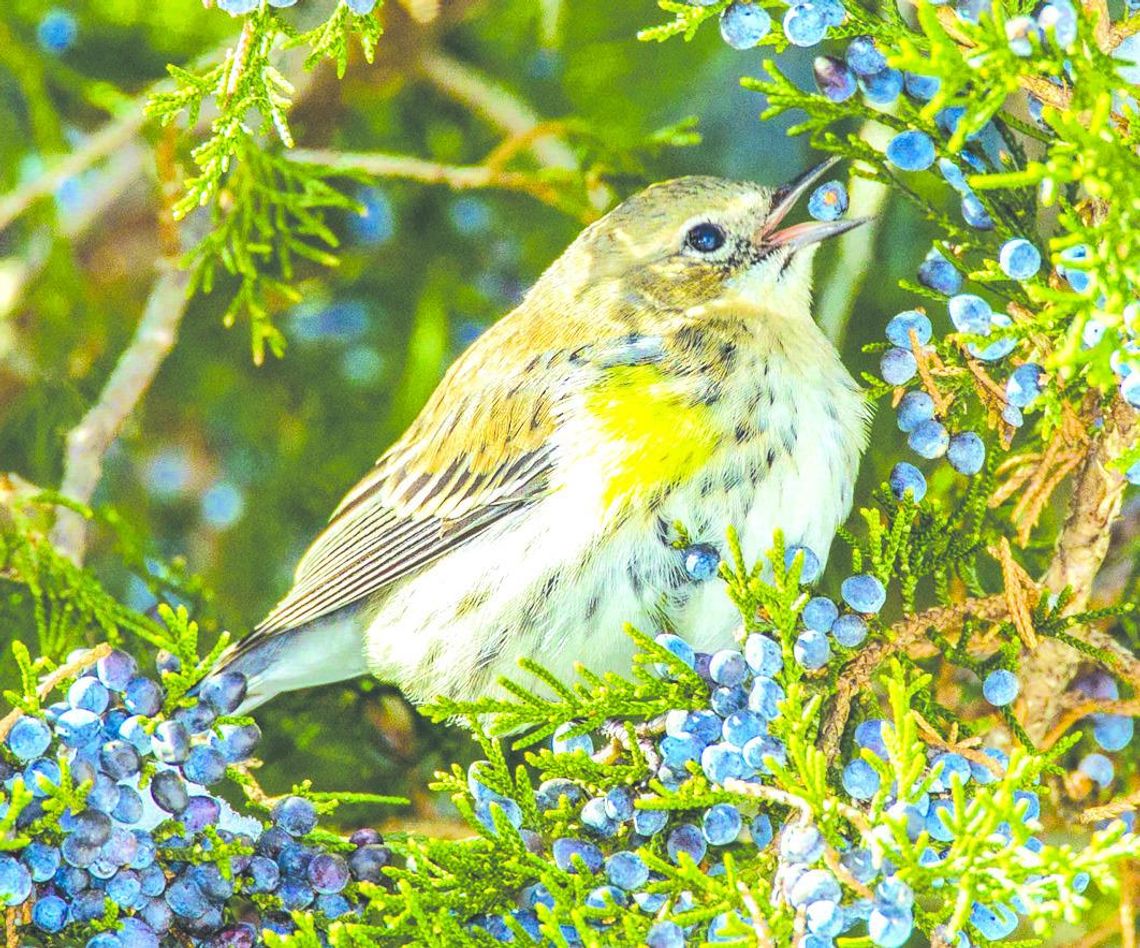I was quite pleased that one of the first birds I spotted in the new year was a yellow-rumped warbler.
This handsome little bird is blue-gray above and white below. As befits its name, it has a bright yellow patch on its rump.
It is also commonly known as a “butter butt.”
This warbler is one of the last to leave its northern breeding grounds in autumn and one of the first to return in the spring. One of the most gregarious of all warblers, yellow-rumps band together in small flocks to forage through thickets, woodlands and open yards. They feed on caterpillars and other insects.
The birds I saw were feeding on my hanging suet block, a good substitute for insects.
One thing that really helps these warblers is their ability to eat waxy berries that other birds cannot digest. They have developed special enzymes that make this possible. Among the berries they thrive on are those from the wax myrtle and also seeds from Chinese tallow trees.
Yellow-rumped warblers can winter as far north as Nova Scotia. For those who winter further south, Mexico is a prime destination. The birds in Mexico drink droplets of nectar from the tip of a hair attached to the back end of an insect that lives on trees.
Besides wax myrtle berries, this bird loves bayberries.
A small bird, about five inches long, with a wingspan of some nine inches, the yellow rump weighs less than an ounce. Its scientific name is Dendroica coronata, which sounds quite a bit more dignified than “butter butt.”
By any name, this is a most handsome little bird and well worth your attention.









